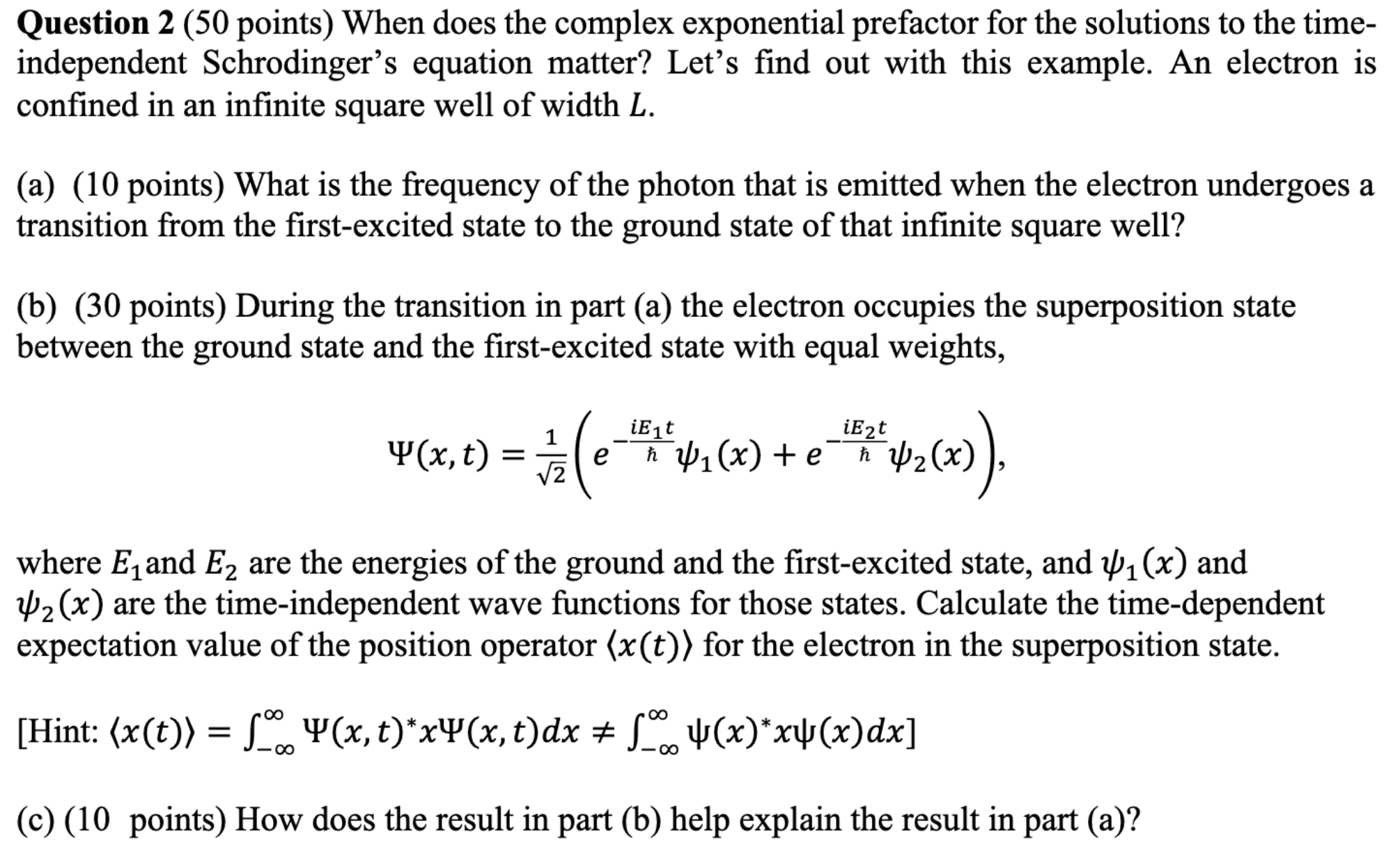Answered step by step
Verified Expert Solution
Question
1 Approved Answer
Question 2 (50 points) When does the complex exponential prefactor for the solutions to the time- independent Schrodinger's equation matter? Let's find out with

Question 2 (50 points) When does the complex exponential prefactor for the solutions to the time- independent Schrodinger's equation matter? Let's find out with this example. An electron is confined in an infinite square well of width L. (a) (10 points) What is the frequency of the photon that is emitted when the electron undergoes a transition from the first-excited state to the ground state of that infinite square well? (b) (30 points) During the transition in part (a) the electron occupies the superposition state between the ground state and the first-excited state with equal weights, 4(x, t) = 2 ( iE1t iE2t 42(x)). e # 4/1 ( x ) + e n 4/21 where and E2 are the energies of the ground and the first-excited state, and 4/11 (x) and 4/12(x) are the time-independent wave functions for those states. Calculate the time-dependent expectation value of the position operator (x(t)) for the electron in the superposition state. [Hint: (x(t)) = Y(x,t)*xY(x,t)dx \(x)*x(x)dx] 8 (c) (10 points) How does the result in part (b) help explain the result in part (a)?
Step by Step Solution
There are 3 Steps involved in it
Step: 1

Get Instant Access to Expert-Tailored Solutions
See step-by-step solutions with expert insights and AI powered tools for academic success
Step: 2

Step: 3

Ace Your Homework with AI
Get the answers you need in no time with our AI-driven, step-by-step assistance
Get Started


